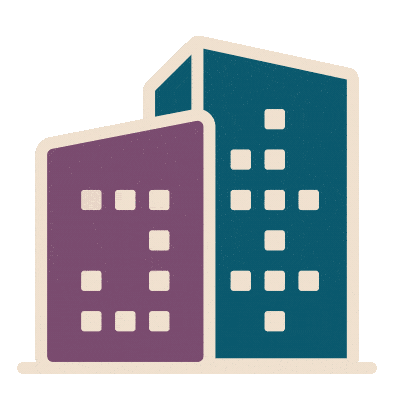IWBI’s Jessica Cooper Sits Down with Jessica Bailey, CEO of Greenworks Lending
IWBI's Signature Interview Series: Exploring How a Clean Energy Financing Tool Is Helping Buildings Advance Health in the Wake of COVID-19
It is well-documented that buildings – the spaces where we spend around 90% of our time– play a significant role in human health and well-being. Moreover, planetary health and human health often go hand-in-hand, so a building that utilizes environmentally sustainable design and operations strategies can also promote positive human health outcomes. The healthy buildings movement is not a new one, but in the wake of COVID-19 there is significant pressure on building owners to invest in their properties’ operational and design elements to provide safer, healthier and more resilient gathering places for tenants and patrons. We have been leading a global movement to transform health and well-being with our people first approach to buildings, organizations and communities. Since the pandemic reached the U.S. last March, we’ve been working with projects and partners around the world to develop and implement evidence-based solutions that can help building and business owners reopen their doors more safely through the WELL Building Standard (WELL) and WELL Health-Safety Rating. To help accelerate uptake of health and well-being best practices, leaders like Greenworks Lending are leveraging existing energy efficiency financing tools like the Commercial Property Assessed Clean Energy (C-PACE) model.
I had a chance to sit down with Jessica Bailey from Greenworks Lending – A Nuveen affiliate, who is the organization’s CEO and Co-Founder. Jessica has seen the role that WELL has played in helping projects navigate a safer and healthier recovery from COVID-19, and she’s been working to advance the C-PACE model for healthy buildings so that projects can better tap into the benefits of strategies that jointly support sustainability and health.
I think the first obvious question for our community is, what is C-PACE? Jessica, can you tell us a bit more about how it’s been used to date?
C-PACE, which stands for Commercial Property Assessed Clean Energy, is a commercial real estate financing mechanism that allows property owners and developers to access long-term, low-cost capital for energy efficiency, water conservation and renewable energy projects. The program starts with a state-level government policy that classifies clean energy upgrades as a public benefit – in the same way a new sewer, water line or road are financed. These upgrades can be financed with no money down and then repaid as a benefit assessment on the property tax bill over a term that matches the useful life of improvements (typically ~20-30 years). The assessment transfers on the sale of the property and can be passed through to tenants where appropriate. While facilitating sustainability efforts, the program also reduces property owners’ annual costs. C-PACE has already driven $2 billion into implementing these types of sustainable and healthy building projects.
How have you seen interest in and demand for a healthy building shift since COVID-19?
Healthy building strategies are no longer seen as a “nice to have” – they are now a “must have” for the majority of building owners and tenants in order to give tenants, employees and consumers the confidence to re-enter buildings and businesses safely. Demand for healthy buildings is expected to rise significantly in the wake of the pandemic – and I know you’ve already seen that reflected through increased project registrations in WELL. Property owners are increasingly recognizing the value that these types of upgrades can offer to not only help reduce the transmission of respiratory infections but also promote the overall well-being of tenants and the people inside the building. Sustainable building strategies can also help move buildings in the direction of promoting health, which is why C-PACE offers a much-needed lever for the market to help drive these positive outcomes.
Given today’s circumstances, how have you been able to leverage C-PACE to better address COVID-19 and integrate strategies that promote health and well-being?
Since enhanced environmental sustainability in buildings can often lead to the enhancement of human health, many of the same measures that can help create a healthy and resilient building can also help save energy and water, and therefore be financed through the C-PACE program.
That’s great to hear. So, can you give us a few examples of the specific building strategies that better address health and efficiency hand-in-hand that can be financed through C-PACE.
One key example is air quality enhancements. There is still much that remains unknown about COVID-19, but scientists have determined that the virus is highly contagious and predominantly transmitted through the air. Research has shown that the virus primarily spreads when infected individuals cough, sneeze, speak or even breathe, which releases respiratory droplets containing particles of the virus into the air. This understanding of the spread of the virus underscores the importance of air purification systems in buildings going forward. C-PACE-eligible enhancements to improve the air quality of buildings, by reducing viruses and bacteria, include HEPA (High-Efficiency Particulate Air) filtration, bi-polar ionization and UV light purification. HEPA filtration can efficiently catch particles the size of or even smaller than the virus that causes COVID-19. Existing HVAC systems can be upgraded to incorporate HEPA filters. Bi-polar ionization, a technology that can be integrated into HVAC systems, is a process where atoms and molecules absorb or eliminate an atomic bond to neutralize another microorganism, such as COVID-19 and other viruses, bacteria, mold, mildew or allergens. Finally, ultraviolet light disinfects by altering the genetic material in pathogens, including the RNA in viruses. The use of UV light purification to disinfect is a long-standing technology that can be installed directly on heating and cooling coils in forced air systems. In-room UV air purification systems are also available.
Another example is building upgrades that minimize surface contact for tenants and customers, which may also reduce the building’s energy and water consumption and would therefore be eligible for upfront financing through C-PACE.
The Center for Disease Control (CDC) has stated that it may be possible for an individual to contract COVID-19 by touching a surface or object that has the virus on it and then touching their own mouth, nose or eyes. Although this is not thought to be the primary way the virus spreads, there is significant opportunity for building owners to implement measures to mitigate the spread through surface contact. Light switches and door handles are often high touch surface areas and so lighting fixtures with touch-free motion sensors and automatic doors can potentially minimize surface spread as well as reduce overall energy consumption.
Moreover, recent studies have shown that COVID-19 can be passed not only through respiratory droplets, but through virus-laden feces, too. Automatic flushing toilets and motion sensor faucets, which would reduce surface contact in bathrooms, could potentially reduce the spread of the virus from surfaces. By reducing or eliminating the need to touch common surfaces, building owners can offer tenants and customers a greater sense of security and peace of mind.
These air quality enhancement and touch-free technology measures will not only help to create healthy buildings, they will also help to lower property owners’ net operating income through increased energy savings. These benefits will boost the attractiveness of a building to tenants and people using the space as well as increase property value.
How do you see C-PACE evolving as demand grows to deliver on the promise of both planetary and human health?
Above all, the COVID-19 pandemic has demonstrated that these types of health-promoting design and operations measures are no longer just a value-add to a building – they are essential to allowing groups of people to safely gather once again. Moreover, in the past year we’ve also seen the increasingly devastating health impacts of climate change on communities around the globe, highlighting more than ever the linkages between planetary and human health. We can no longer think of energy efficiency in a vacuum – we have to consider how financing and development strategies capture both sustainability and health benefits. As America slowly reopens in the wake of COVID-19 shutdowns, and as we anticipate climate impacts will only intensify in the future, C-PACE can offer all building owners a cost-saving pathway to capturing these joint benefits and making their buildings efficient, resilient and safe gathering places that are better equipped to protect the environment and support people’s health.
Thanks Jessica, we really appreciate the opportunity to learn from you and better understand how C-PACE can act a powerful tool for advancing human and planetary health hand-in-hand.
To learn more about C-PACE financing, please visit greenworkslending.com.







